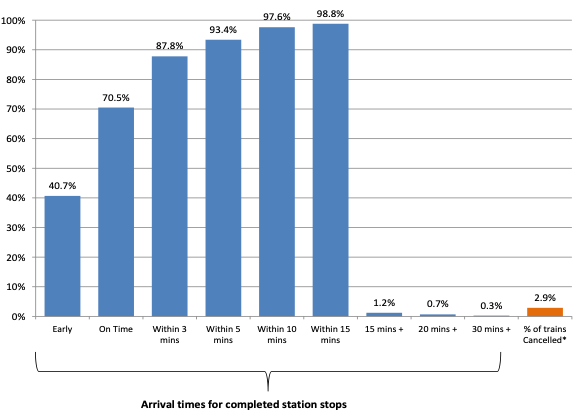I mean no offence and you have been amazing in many many of my previous posts. You have my upmost respect. ♥♥
However,
As we have discussed before about how SRTs are built, how TRUST works, planning rules etc etc. They do not reflect station to station timings. I literally leave my departure station and the very next station is only timed for 3 minutes. It ALWAYS takes 4. On the incoming trip you can be late at the previous station but gain a minute back. We also get delay requests for the same section over and over again. The timings just don't work. I have been 'late' between X and X for 15+ years !!!111eleventy1 !!
I often get frustrated with the 'timetable' and you have been one of a few who ameliorate that frustration with your insight. The Man with the Plan is another who puts me on the straight and narrow too.
My TOC has never cared about RT until we have been forced to. Being late at intermediate stations has always been 'normal'
The 'padding' thing is odd. Perception is that time is added and trains 'miraculously' make time back right at the most crucial times. That perception is what drives people to believe the timetable has been 'padded' When I first started it was known as 'make up time' places where we were always late but was given 'make up time' to put the service back. As I mentioned. We get stations where we are always late but make it back a couple of stations later. I have learned that this is 'pathing' 'diamond time' and indeed 'performance' time allowances. How else is that to be perceived other than 'padding' ?
I have stated this before and now right time railway will in my opinion level the playing field a bit more as well as hopefully giving NR a bit more impetus to challenge more.
I don't deny there are many SRTs and items in the planning rules that are off slightly or plain wrong. The issue we have is that under PPM and the congested state of the network, trying to alter these is a very difficult job. If a SRT is short and you want to increase it to the correct value, does it bust the timetable? and even if it doesn't why would a TOC want a journey time increase when they can also say the "incorrect SRT, delay to train planning" and NR not really wanting to fight at a dispute. Same goes for an inflated SRT, why let NR get rid of a bit of time up your sleeve unless it does anything for you?
Now that the measure is changing, it will all of a sudden be a bit more collaborative and things will get fixed in a lot of cases (not all as some will cause a sizable unraveling)
Padding is a down to an understanding of what the allowances are for, and in your example above, likely an inflated dwell or SRT allowing that to happen. Chances are it wasn't deliberate.
You have four allowances, engineering recovery [box time] which is there for recovering from TSRs, if there isn't one then you are early at a timing point but if we don't have it then you are importing a delay in.
Pathing time (circle time) is there to keep trains apart to the planning headway value, so if a headway is 4 minutes and you are catching say a stopper up, we would add in circle time to keep you 4 minutes behind it. That is assuming you stay back at a green aspect so you keep to the achievable speed and thus the SRT, but there are a number of factors that are difficult to factor in to that such as professional driving, reading through aspects etc...
Adjustment time {squiggle time} which is to allow for approach control, speeding up from a slow joining junction etc..
Performance time <diamond time> is the only out and out padding, and there is not a lot of it about and is normally at the TOC request, you won't find many examples of it in the planning rules. That is normally approaching a known congested area, though in my opinion if the SRTs and TPR are correct, you shouldn't really need it.


